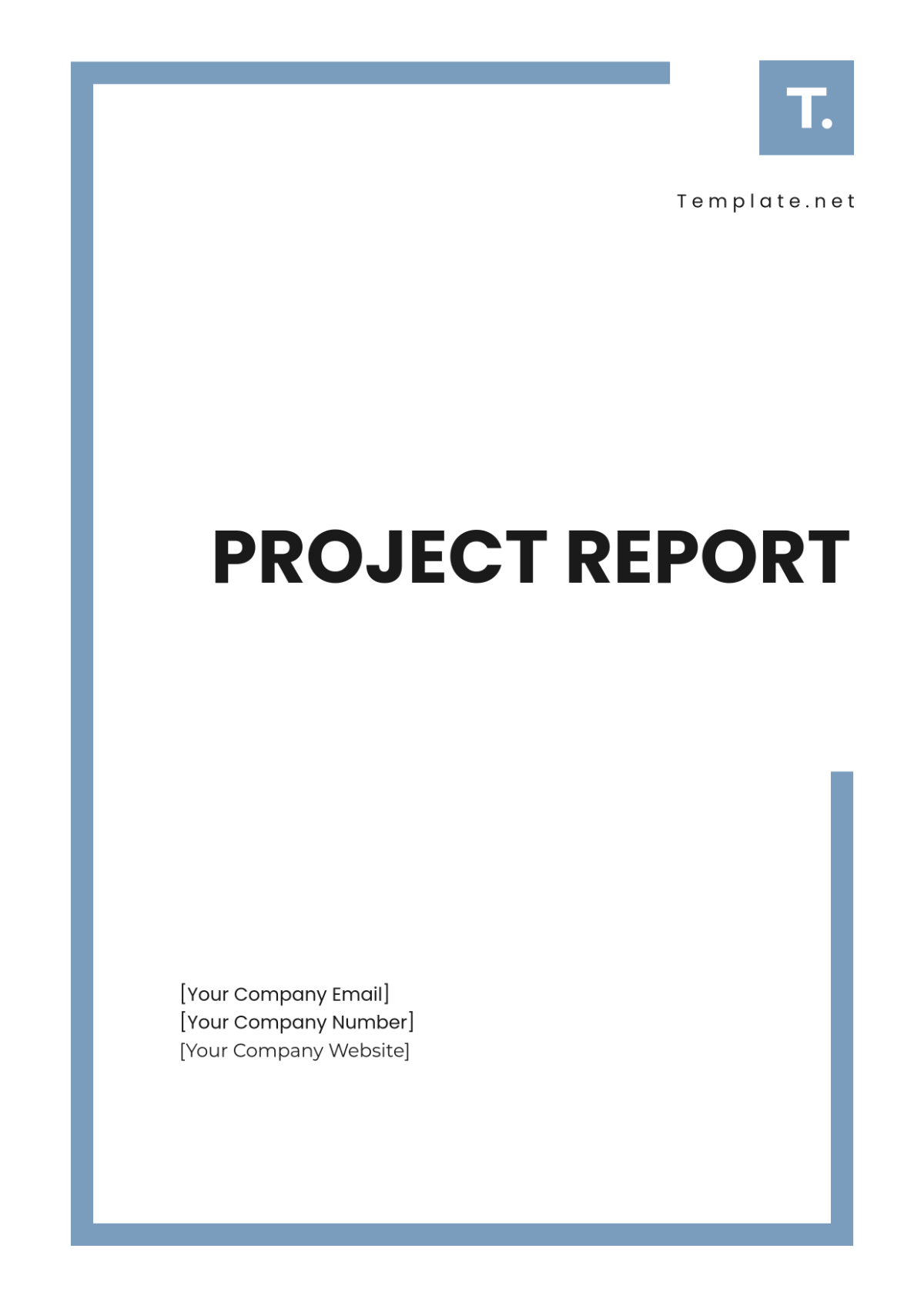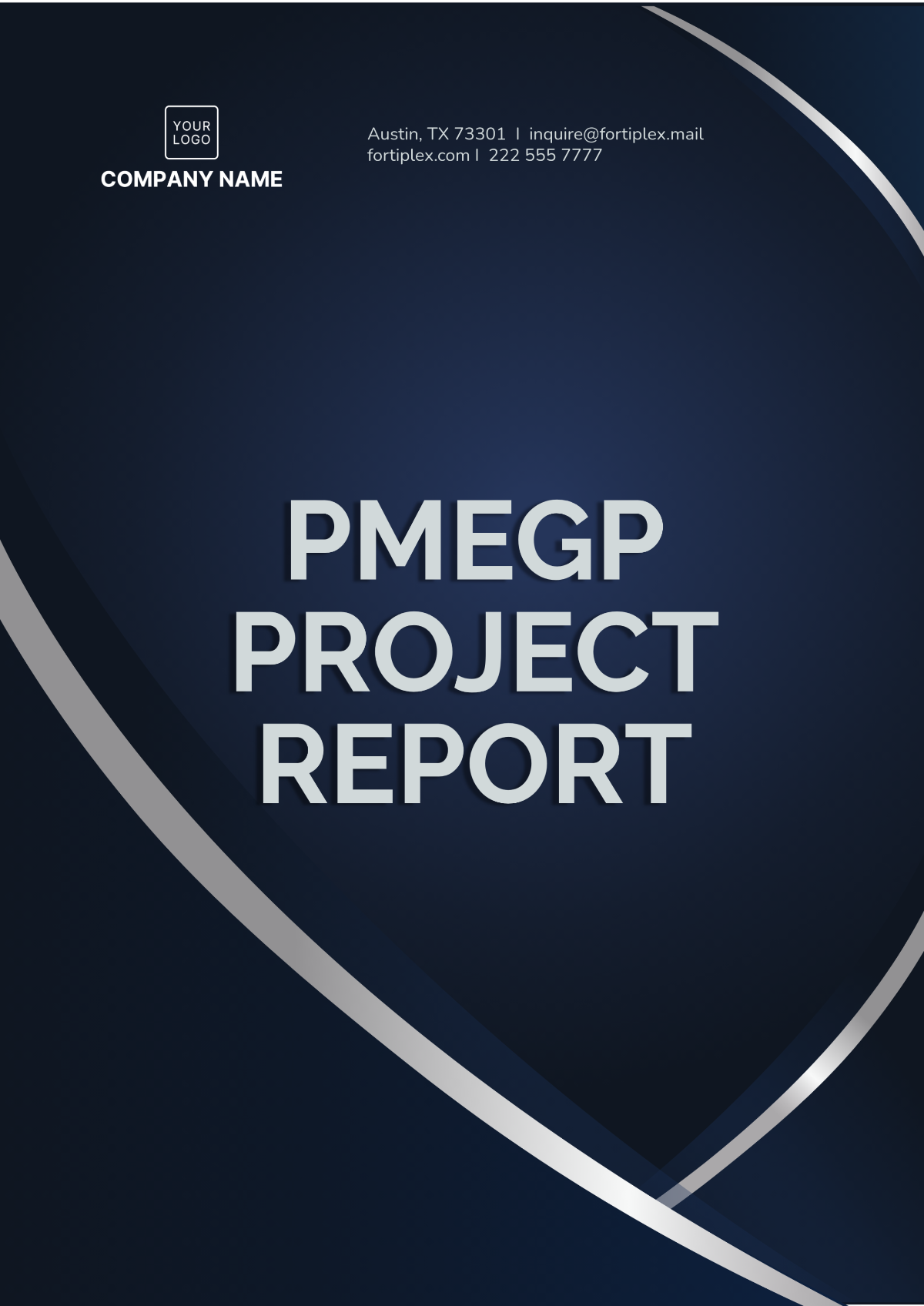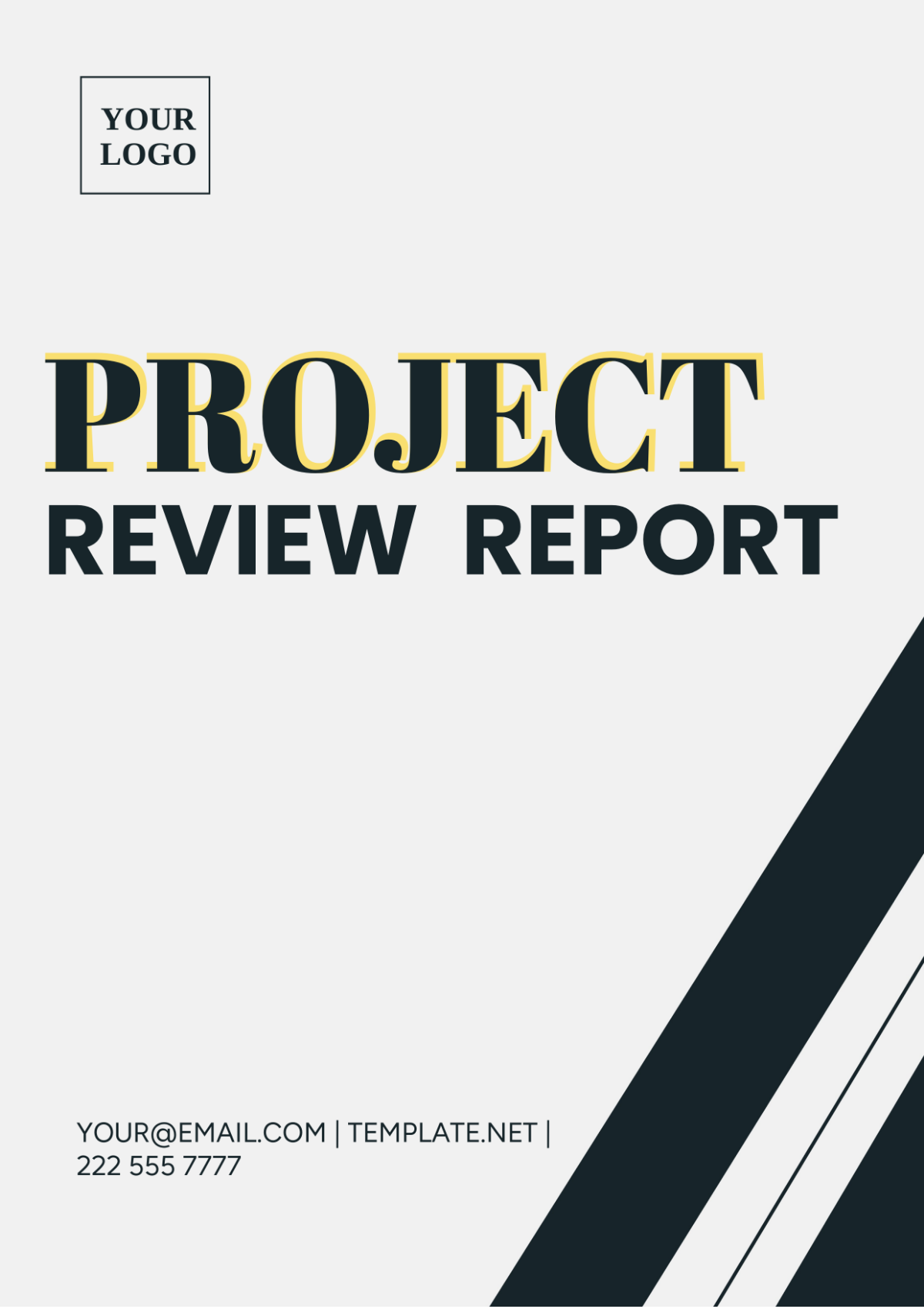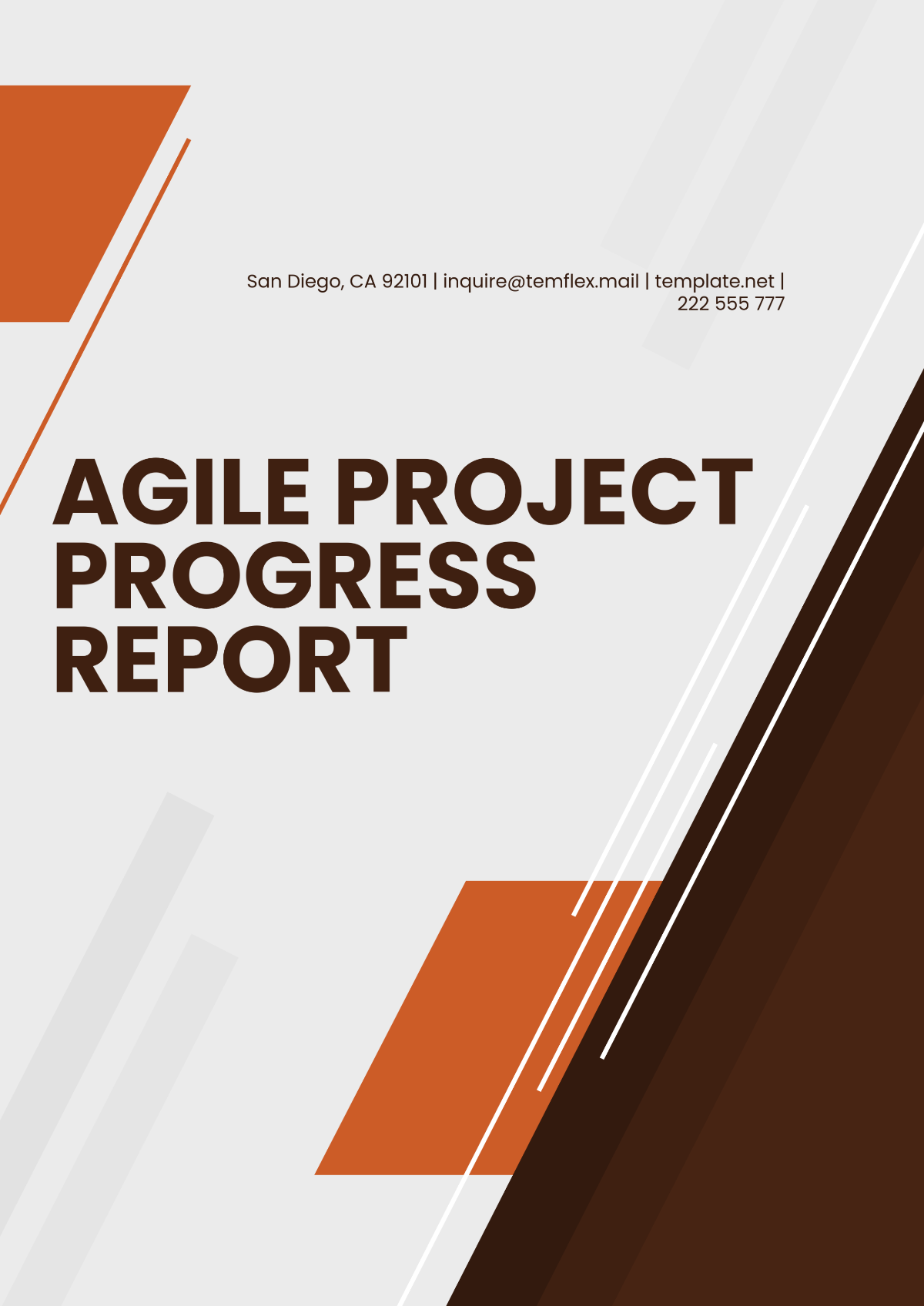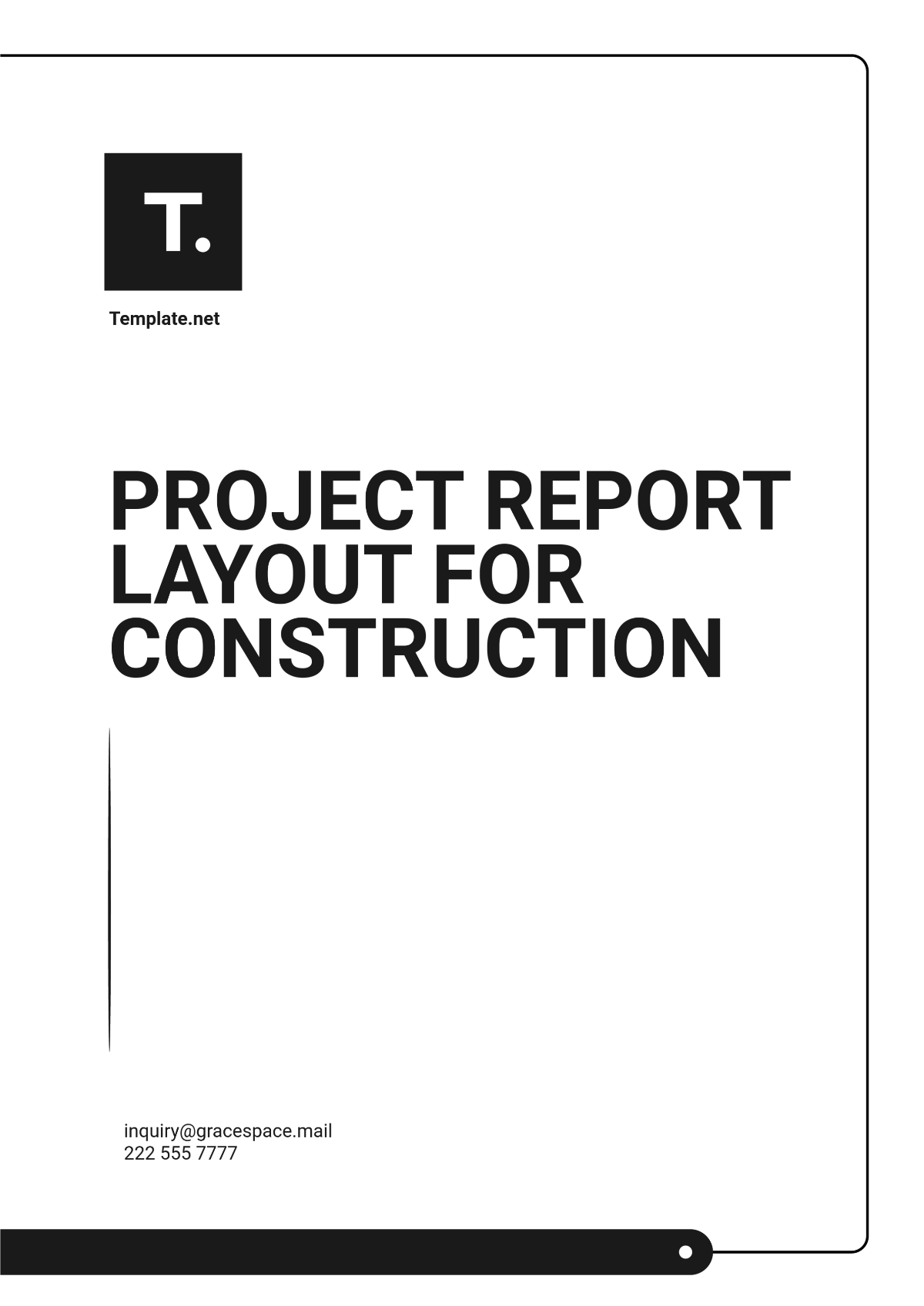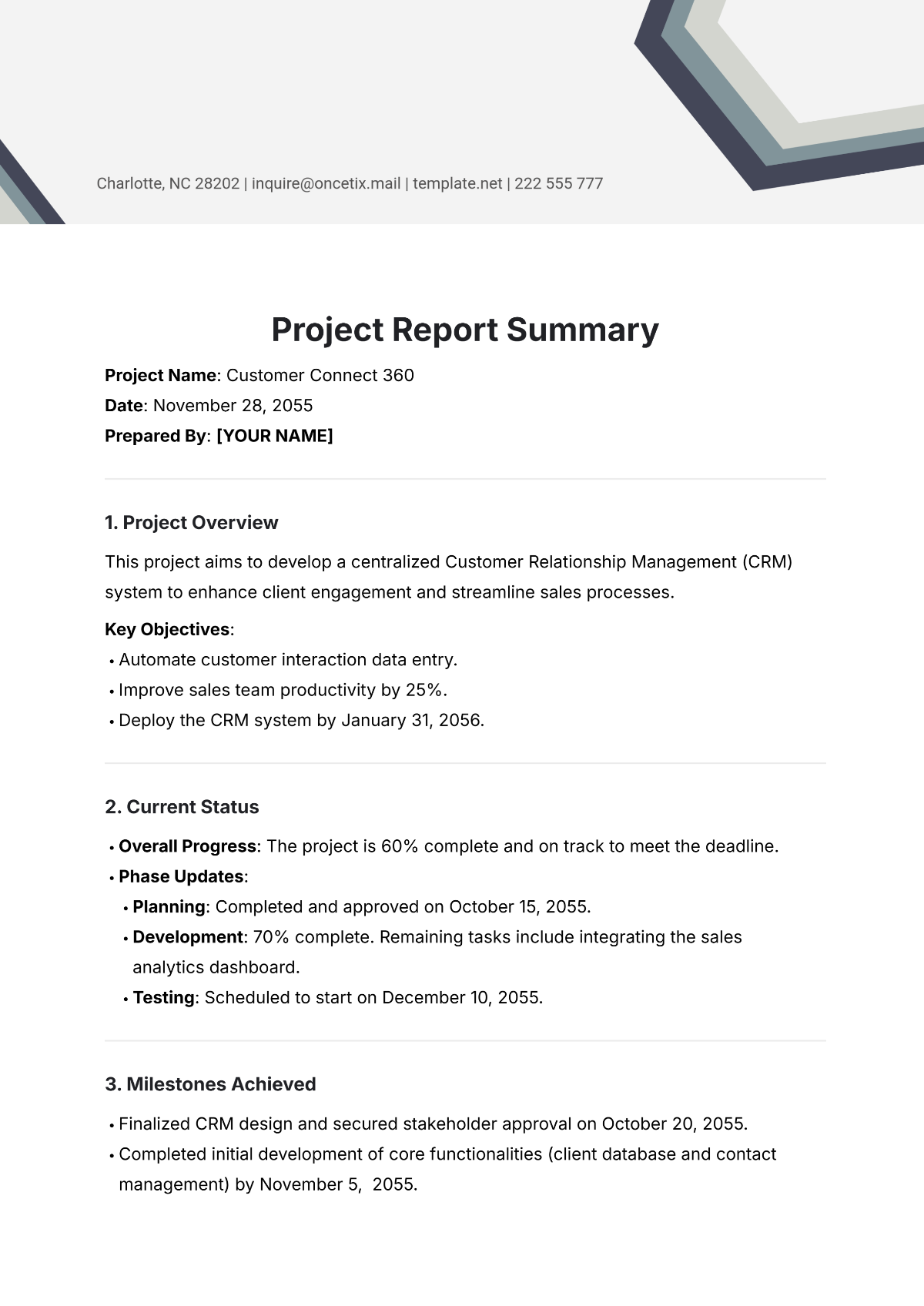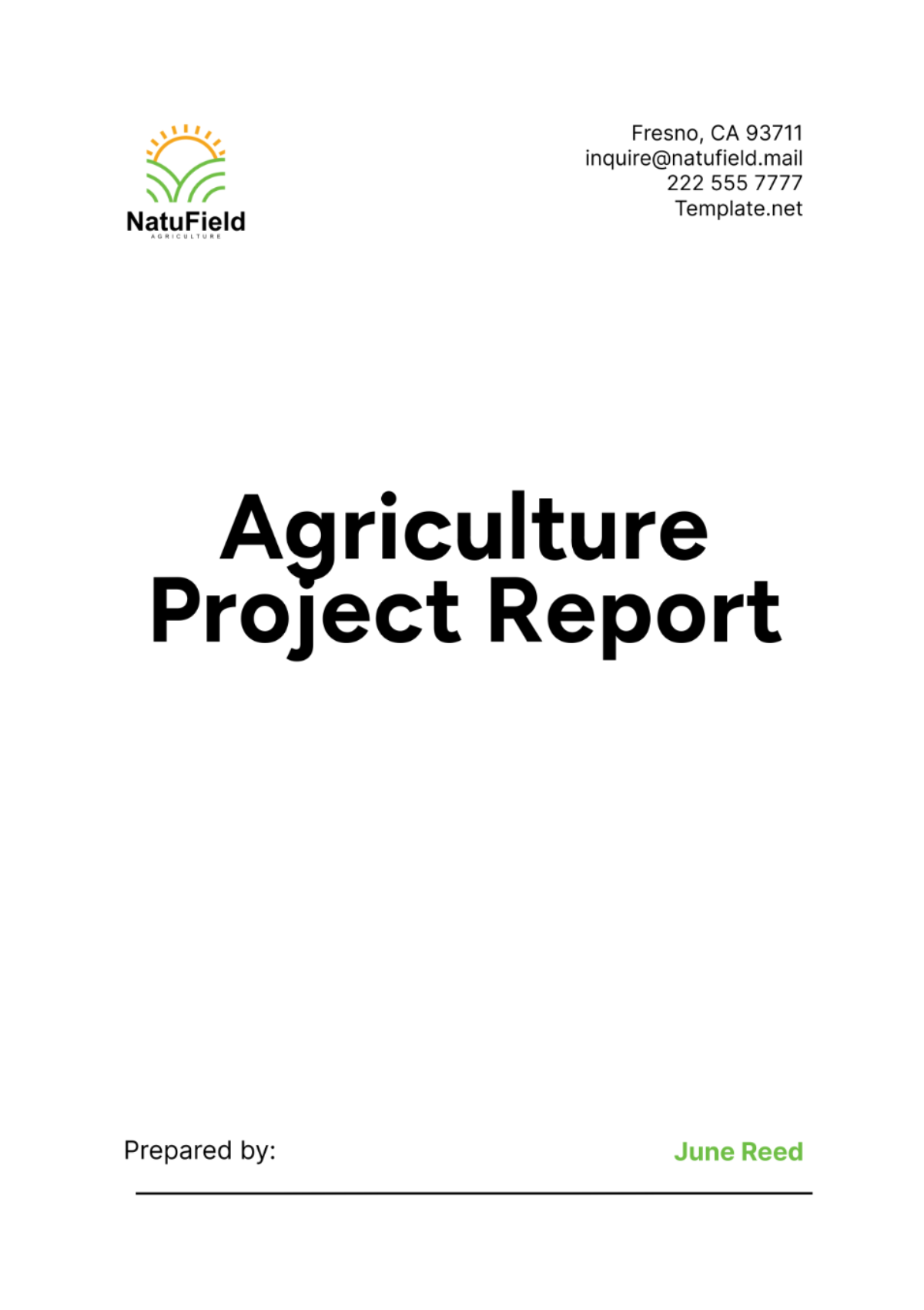Startup Project Report
I. Executive Summary
A. Overview of the Startup
[Your Company Name] is a cutting-edge startup founded in [Year], specializing in AI-driven solutions tailored to optimize operations in small and medium-sized enterprises (SMEs). Our mission is to democratize access to advanced technology, enabling businesses of all sizes to benefit from automation and increased efficiency. With a diverse team of industry experts and technologists, we are committed to driving innovation and delivering impactful solutions.
B. Project Objectives and Scope
The "AI-Driven Workflow Optimization" project is designed to revolutionize how SMEs manage their daily operations by automating key tasks and processes. This initiative targets the development, testing, and deployment of a comprehensive AI platform, ensuring it meets the unique needs of SMEs in various sectors. The project scope also includes post-launch support and continuous enhancement based on user feedback.
C. Key Achievements and Milestones
To date, we have achieved several critical milestones, including the completion of our initial platform prototype and the successful onboarding of five beta customers. These early adopters have already reported measurable improvements in operational efficiency, validating the effectiveness of our solution. Additionally, we have received positive recognition in industry circles, further establishing our brand in the market.
D. Summary of Financial Performance
We have secured $[00] million in seed funding, which has been strategically allocated to ensure maximum impact, with the majority focused on product development and market entry. Our disciplined approach to financial management has enabled us to maintain a healthy burn rate, extending our runway and positioning us for future growth. Despite the significant investment in R&D, we remain on track to achieve our financial targets for the year.
E. Strategic Outlook and Next Steps
As we move forward, our strategy involves scaling the customer base by leveraging the success of our beta program and expanding our marketing efforts. We plan to enhance our platform's capabilities, incorporating advanced features that address the evolving needs of our target market. Additionally, we are preparing for Series A fundraising to secure the necessary resources for our next phase of growth.
II. Project Objectives and Scope
A. Defined Project Goals
Our primary goal is to deliver an AI platform that increases productivity in SMEs by at least [00]% within the first year of deployment. This platform aims to automate repetitive tasks, allowing businesses to focus on strategic initiatives and customer engagement. We also seek to establish a strong market presence, achieving significant user adoption and customer satisfaction.
B. Scope of the Project
The project's scope covers the end-to-end development of the AI platform, including design, coding, testing, and deployment. We are focusing on SMEs in the manufacturing and retail sectors, where efficiency gains can have the most significant impact. The scope also includes the creation of a comprehensive training program to ensure smooth adoption and effective use of the platform by our customers.
C. Alignment with Overall Startup Vision
This project is central to [Your Company Name]’s vision of empowering SMEs with affordable and effective AI solutions. By focusing on ease of use and significant operational improvements, we are making advanced technology accessible to a broader market. The successful execution of this project will position us as a leader in the AI space for SMEs, driving long-term growth and innovation.
D. Key Performance Indicators (KPIs) and Metrics
Key KPIs include achieving a [00]% customer satisfaction rate, meeting product development deadlines, and securing a minimum of 50 paying customers by the end of the first year. We also aim to generate $[00] in revenue within the same timeframe, reflecting strong market adoption. Additionally, we will track user engagement metrics to continuously refine and improve the platform.
III. Progress Overview
A. Summary of Completed Milestones
We have completed the initial prototype of our AI platform, incorporating core features that automate essential business processes. The beta program has been launched, with five customers actively using the platform and providing valuable feedback. These achievements are in line with our project timeline, demonstrating our ability to deliver on our commitments.
B. Product Development Progress
The development team has successfully integrated advanced AI algorithms, focusing on accuracy and efficiency in automating workflows. We are currently in the testing phase, where we are fine-tuning the platform based on real-world use cases provided by our beta customers. Ongoing iterations and improvements are being made to ensure the final product meets the highest standards of performance and reliability.
C. Market Penetration and Customer Acquisition
Our initial market penetration strategy has yielded promising results, with early adopters representing a significant portion of our target market. We have implemented a targeted outreach campaign, leveraging industry connections and digital marketing to attract more SMEs. Customer acquisition is expected to accelerate as we transition from beta testing to full-scale deployment.
D. Key Successes and Wins
The platform's ability to deliver immediate efficiency gains has been a major success, earning us high praise from our beta customers. Our approach to customer support, including personalized onboarding and training, has further solidified our reputation as a customer-centric company. These successes have not only validated our product but also strengthened our relationships with key industry stakeholders.
E. Timeline and Schedule Adherence
We have adhered to our project timeline, with all major milestones being met on or ahead of schedule. Minor delays in certain areas were quickly addressed without impacting the overall project progress. This disciplined approach to project management has been crucial in maintaining momentum and ensuring timely delivery of our platform.
IV. Financial Performance
A. Revenue and Profit Analysis
While revenue generation is set to begin in Q4 with the transition of beta users to paid subscriptions, our projections indicate a steady increase in monthly revenue, reaching $[00] by the end of the year. Profitability is expected in 18 months due to scalable subscriptions and efficient operations, supported by a strong customer pipeline and rising AI demand in the SME sector.
B. Expense Overview and Budget Compliance
We have maintained strict budget compliance, ensuring that all expenditures are aligned with our strategic goals. Major expenses focus on R&D at [00]% of our budget, followed by marketing and customer acquisition. Our lean model optimizes costs, maximizing returns.
C. Funding Status and Investment Updates
The $[00] million seed funding has been instrumental in driving our initial development and market entry efforts. We've managed funds wisely to extend our runway and prep for growth. We're discussing a Series A round to scale operations and enter new markets.
D. Cash Flow Statement
Our cash flow remains positive, with careful management of both inflows and outflows to ensure financial stability. We've implemented strong financial controls to monitor expenses and optimize cash flow, giving us the flexibility to adapt to market changes while maintaining momentum.
E. Financial Projections and Forecasts
Looking ahead, we project a break-even point by Q2 of the next year, supported by a growing customer base and increasing subscription revenues. We expect $[00] million in annual revenues due to market growth and product improvements, with room for potential gains.
V. Market Analysis
A. Current Market Conditions
The AI-driven business solutions market is experiencing rapid growth, with SMEs increasingly recognizing the need for automation to stay competitive. Technological advancements, cost reductions, and understanding AI's benefits drive this trend, creating a significant market opportunity for our innovative solutions.
B. Competitive Landscape Overview
The competitive landscape includes both established software providers and emerging startups, each vying for a share of the AI market. Our advantage is our SME focus, offering tailored, powerful, and easy solutions with top user experience and support, unlike larger competitors.
C. Customer Feedback and Satisfaction
Customer feedback has been overwhelmingly positive, with users highlighting the platform’s intuitive design and significant impact on productivity. Customer feedback is shaping our development roadmap, and high beta user satisfaction signals potential market success.
D. Market Trends and Shifts
We are observing a shift towards AI adoption not just in large enterprises but increasingly among SMEs, driven by the need for efficiency and cost-effectiveness. This trend suits our market position, as businesses want scalable, user-friendly solutions. Digital transformation boosts the need for AI-driven tools.
E. SWOT Analysis (Strengths, Weaknesses, Opportunities, Threats)
Strengths | Our platform’s innovative technology, strong early adoption, and user-friendly interface set us apart in a competitive market. |
Weaknesses | We face challenges in brand recognition and the ongoing need for R&D to stay ahead of technological advancements. |
Opportunities | There is significant potential for expansion into new markets and the development of additional AI features that cater to broader business needs. |
Threats | Increasing competition from both startups and established companies, as well as potential market saturation, pose risks that we must continually address through innovation and customer engagement. |
VI. Challenges and Risks
A. Summary of Challenges Faced
One of the primary challenges we faced was the complexity of integrating advanced AI features while maintaining ease of use for SMEs. Additionally, we encountered difficulties in gaining early customer trust, which required extensive efforts in demonstrating the platform’s value and reliability.
B. Risk Assessment and Mitigation Strategies
We identified key risks including potential delays in product development and slower-than-expected market adoption. To mitigate these risks, we have implemented agile development processes and are maintaining a flexible marketing strategy that can be adjusted based on market feedback.
C. Impact of External Factors (e.g., Market Changes, Regulations)
Regulatory changes in data privacy have necessitated enhancements to our platform’s security protocols, ensuring compliance with new standards. Market fluctuations, particularly in the tech sector, have also required us to adopt a more cautious financial approach to safeguard our resources.
D. Lessons Learned
We learned the importance of involving customers early in the development process to ensure the platform meets real-world needs. Another key lesson was the value of flexibility in both our product and go-to-market strategies, allowing us to adapt quickly to unforeseen challenges.
E. Contingency Plans
Our contingency plans include extending the beta phase and reallocating resources to customer support in case of slower adoption. We are also prepared to pivot our marketing efforts to focus on alternative customer segments if initial outreach does not meet expectations.
VII. Future Plans
A. Upcoming Milestones and Objectives
Key upcoming milestones include the official launch of the AI platform, targeted for Q4, and the expansion of our customer base to 50 paying clients. We also aim to initiate our Series A fundraising round to secure additional capital for scaling operations.
B. Strategic Initiatives and Innovations
We plan to introduce new AI-driven analytics features that provide deeper insights into business operations, enhancing the platform’s value proposition. Additionally, we are exploring strategic partnerships with industry leaders to broaden our market reach and enhance the platform’s capabilities.
C. Expansion Plans and Market Growth Strategies
Our expansion plans focus on entering the European market by Q2 of the next year, targeting SMEs in key industries such as manufacturing and retail. We will also increase our marketing spend to accelerate customer acquisition and solidify our presence in existing markets.
D. Product Enhancements and Roadmap
The product roadmap includes the development of customizable AI modules, allowing users to tailor the platform to their specific needs. We are also planning to integrate third-party tools and services, further enhancing the platform’s functionality and user experience.
E. Resource Allocation and Budget Planning
We are allocating additional resources to enhance product development and customer support, ensuring that we can scale effectively. Budget planning includes provisions for increased marketing efforts and further R&D investments to keep the platform at the cutting edge of technology.
VIII. Team and Resource Management
A. Current Team Structure and Roles
Our team currently consists of 15 members, with key roles including AI developers, product managers, and marketing specialists. Each team member brings a unique set of skills that are crucial to the success of the project, ensuring we have the expertise needed to execute our strategy effectively.
B. Key Hires and Talent Acquisition
We have recently brought on two senior AI engineers to bolster our development capabilities and a marketing director to lead our go-to-market efforts. Future hiring plans include expanding our customer support team as we anticipate increased demand following the platform’s full launch.
C. Resource Utilization and Efficiency
We have implemented agile methodologies across the team to maximize efficiency and ensure timely delivery of project milestones. This approach has allowed us to effectively manage resources, minimizing waste and focusing efforts on high-impact areas.
D. Employee Development and Training Initiatives
Continuous training programs have been established to keep our team updated on the latest AI technologies and industry trends. We have also introduced leadership development initiatives to groom key team members for future management roles as the company grows.
E. Organizational Culture and Team Dynamics
Our organizational culture emphasizes collaboration, innovation, and a commitment to excellence, fostering a supportive environment where creativity can thrive. Regular team-building activities and open communication channels have strengthened team dynamics, ensuring that everyone is aligned with our mission and objectives.
IX. Conclusion and Recommendations
A. Overall Project Assessment
The project has made significant progress, with key milestones met and positive feedback received from early adopters, indicating strong potential for success. Our disciplined approach to project management and financial oversight has positioned us well for the next phase of growth.
B. Strategic Recommendations for Stakeholders
Stakeholders should continue to support our efforts to scale the platform and expand our market presence, particularly as we prepare for the next round of fundraising. Additionally, we recommend maintaining a focus on product innovation to ensure we stay ahead of competitors and continue delivering value to our customers.
C. Next Steps and Action Items
Immediate next steps include finalizing the platform’s development, launching it to a broader audience, and initiating Series A fundraising efforts. We will also be conducting a thorough review of customer feedback to guide future product enhancements and marketing strategies.
D. Final Thoughts and Summary
The AI-Driven Workflow Optimization project has demonstrated its potential to transform SME operations, and we are confident in our ability to scale and achieve significant market impact. With continued support and strategic focus, we are poised to drive further growth and innovation in the coming months.
